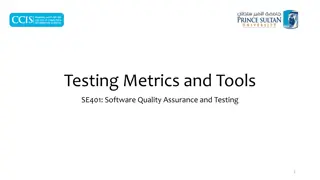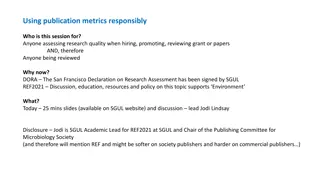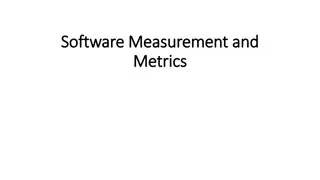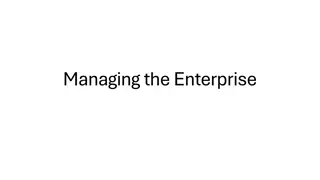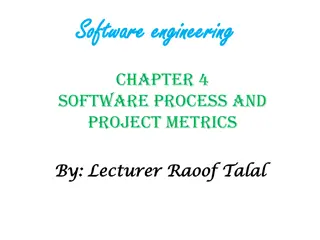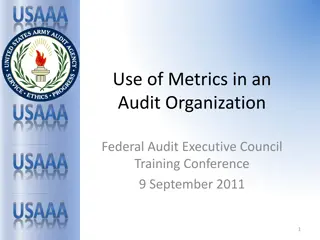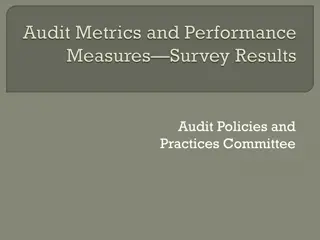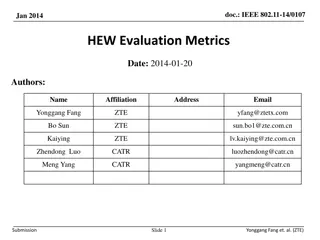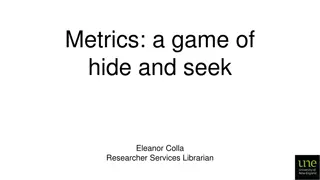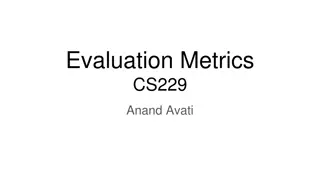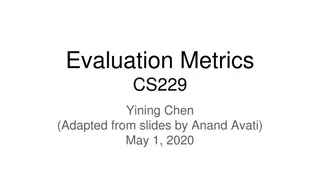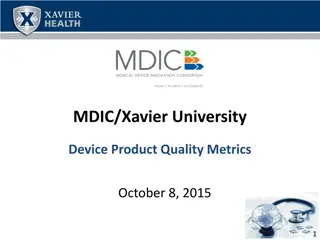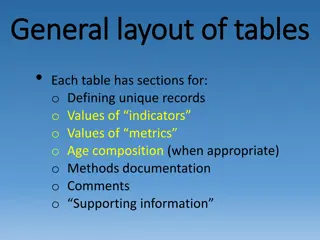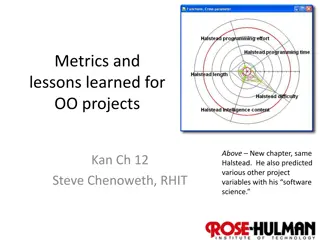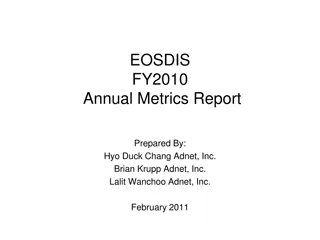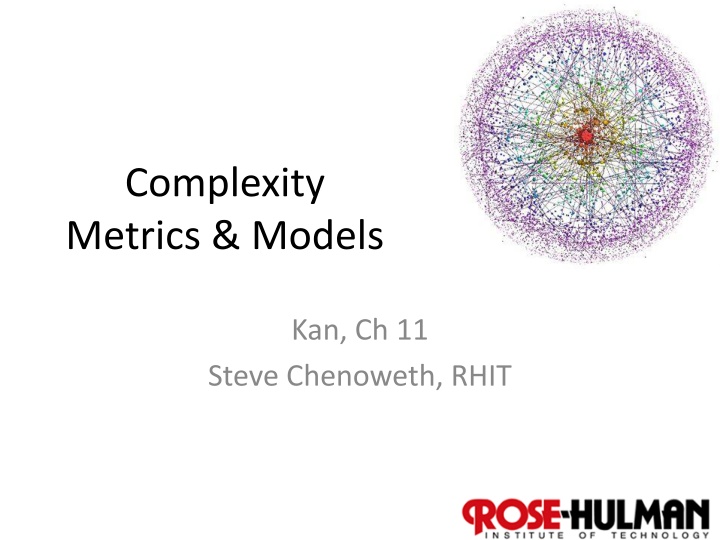
Understanding Software Complexity Metrics and Models
Exploring various software code analysis methods such as Lines of Code, Halstead's Software Science, and Cyclomatic Complexity to predict defects and enhance code quality.
Download Presentation

Please find below an Image/Link to download the presentation.
The content on the website is provided AS IS for your information and personal use only. It may not be sold, licensed, or shared on other websites without obtaining consent from the author. If you encounter any issues during the download, it is possible that the publisher has removed the file from their server.
You are allowed to download the files provided on this website for personal or commercial use, subject to the condition that they are used lawfully. All files are the property of their respective owners.
The content on the website is provided AS IS for your information and personal use only. It may not be sold, licensed, or shared on other websites without obtaining consent from the author.
E N D
Presentation Transcript
Complexity Metrics & Models Kan, Ch 11 Steve Chenoweth, RHIT 1
Dipping down to the code level What can we decide about quality, from the code itself? This is real computer science Analysis of code design Can you predict defects from that? 2
Lines of Code, perhaps? LOC = how many executable statements Started as How many machine instructions? Early studies a negative relationship! More lines of code in a module lower defect density Smaller modules have a higher density of interfaces, a main cause of errors 3
LOC, cntd More recent studies a concave curve When module size becomes very large, the complexity increases to a level beyond a programmer s immediate span of control and total comprehension. 4
Halsteads Software Science 1977 Lots of formulas Starts with operators (n1) and operands (n2), and their occurrences in a program. Vocabulary n = n1 + n2. Length N = n1 log2 (n1) + n2 log2 (n2). Volume V = N log2 (n). Faults B = V/S* , where S* = 3000 is the number of mental discriminations between errors). 5
Halstead, cntd His work was instrumental in making metrics studies an issue among computer scientists. Kan thinks - Not that scientific Oversimplified Halstead, right, was also known as the father of decompilation. He worked at Purdue. Looked a little like Bill Murray, left, 6
Cyclomatic Complexity Due to McCabe (1976) An indication of testability and understandability. A classic graph theory calculation Easy way: M = the number of binary decisions in a program + 1. An n-way decision counts as n-1 binary decisions. An iteration test in a loop counts as 1 binary decision. 7
Cyclomatic Complexity, cntd How about this one? 8
Cyclomatic Complexity, cntd Computer scientists love this one! But, does it measure the defect rate? Moderate to strong correlations with defects. But, it also correlates with program size! If you take that out, not so much correlation with defects. Kan thinks this is because of a lack of invetigational rigor. Troster restored this by looking at rank-order correlation. 9
Other complexity studies Maybe it s loops, versus if-then-elses? Maybe it s the number of unique operands? Lo s equations combined all these in formulas. Decided that the DO WHILE was a culprit he could reduce the use of. 10
Structure Metrics Take into account interactions between modules. Many proposed models, not yet verified by empirical data from projects. Fan-in and fan-out have been studied more: Large fan-in not expected to correlate with defects. Large fan-out is expected to correlate with defects. Card & Glass s study (1990): S = f2(i) / n , where S = Structural Complexity F(i) = Fan-out of module I N = Number of modules in system So, structural complexity increases as the square of the connections between programs (fan-out). They found that Error rate = -5.2 + 0.4 * Complexity. Each unit increase in system complexity increased the error rate by 0.4 (errors per thousand lines of code). 11
Kans example Showed how such metrics can be used to develop a software quality improvement plan. Focused especially on cyclomatic complexity. Development was for IBM AS/400 software. Written in PL/MI 70 KLOC Most of the code originally for IBM System/38. 12
Kans example, cntd Found that small changes are especially error- prone. Correlation between previous defect history and current defect level was strongest. Many modules in a component are chronic problem components. Systematic plans and actions are needed for quality improvement. 13
Kans example, cntd Found low defect rate for low complexity modules. Used multiple regression model to look at effects of independent variables. Controlled for program size. Three most important factors affecting defect rates: Number of changes and enhancements Defect history Complexity level 14
Kans example, cntd So, what did they do to improve quality? Scrutinized modules with moderate complexity yet high defect level. Restructured high-complexity chronic problem modules. Went after compilation warning messages. Used test coverage measurement tools. Improved component documentation and education. 15
Recommendations for small teams Complexity metrics and models are small-team metrics. Measure the internal dynamics of design and code. Unit of analysis is usually the program-module. Recommend using small teams for improvements at this level. Main focus of study could be lines of code, cyclomatic complexity, fan-out, or specific syntactic constructs. Try to find empirical validity for defect rate assumptions. 16


